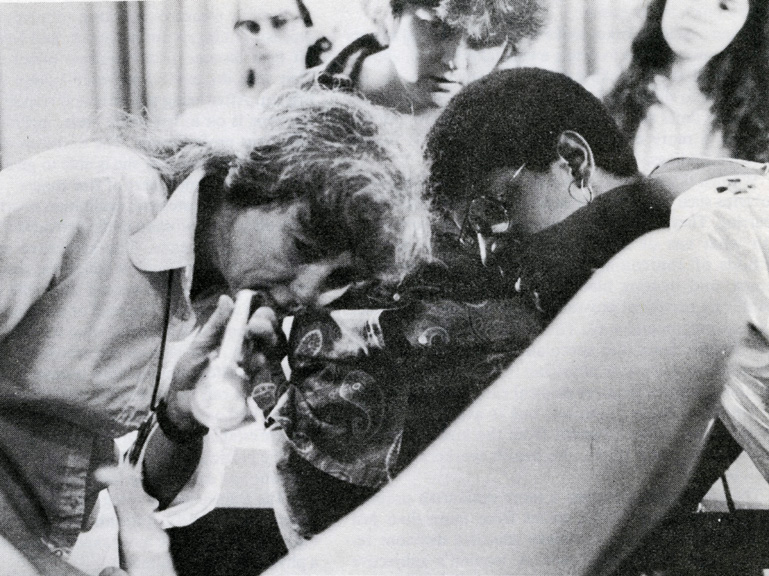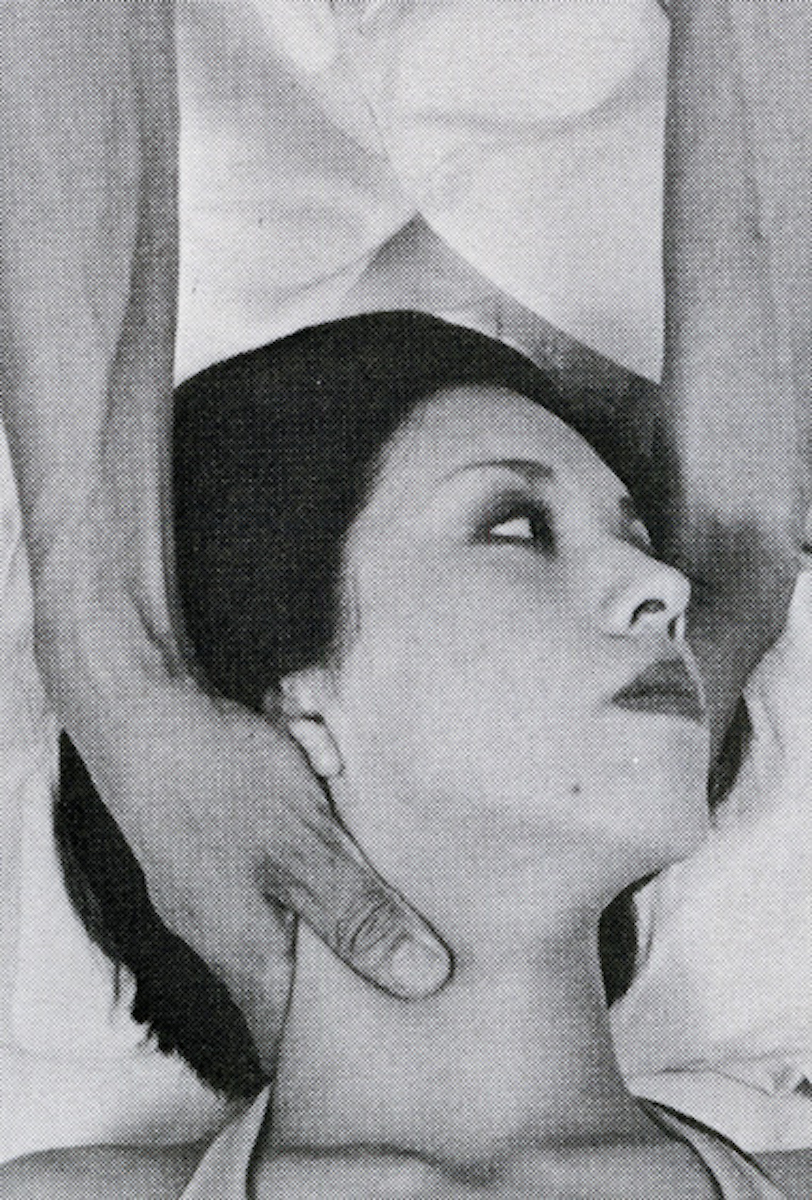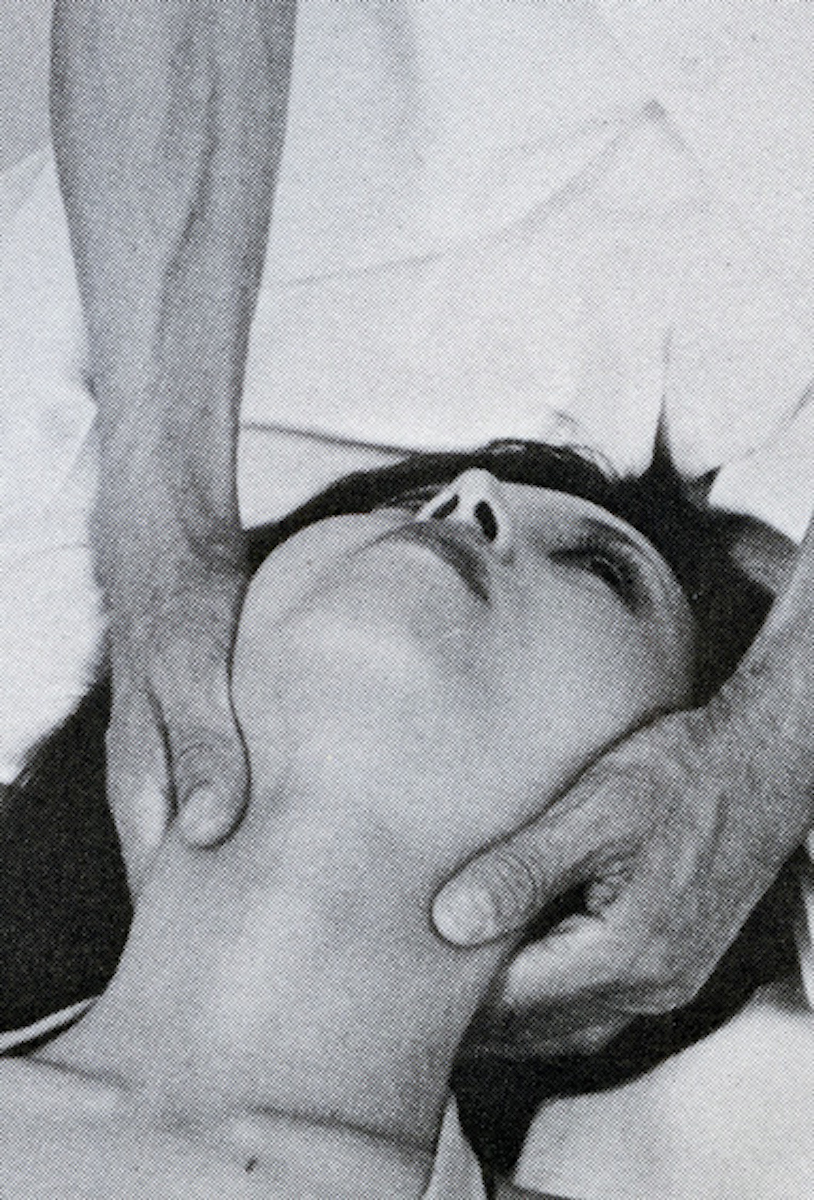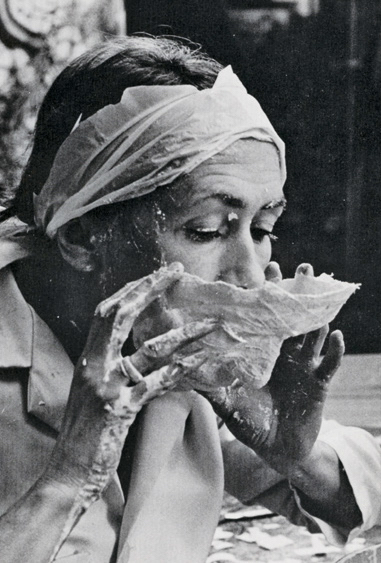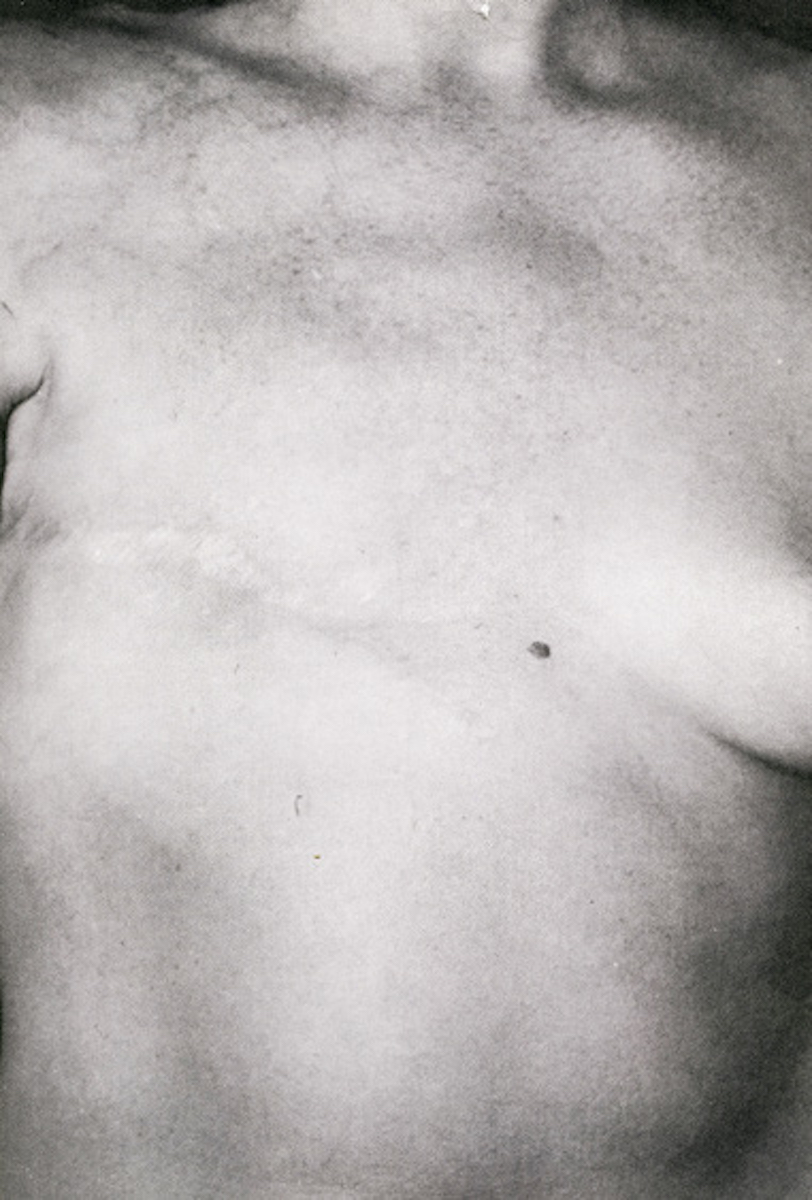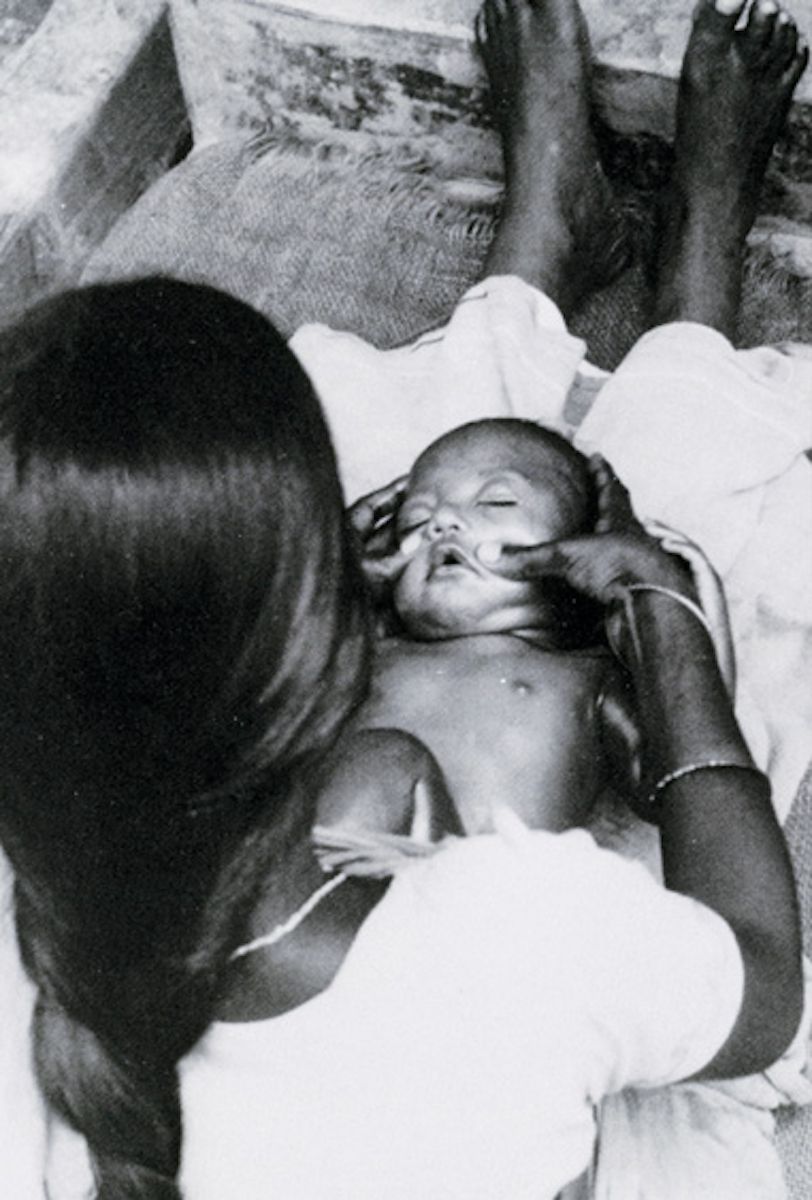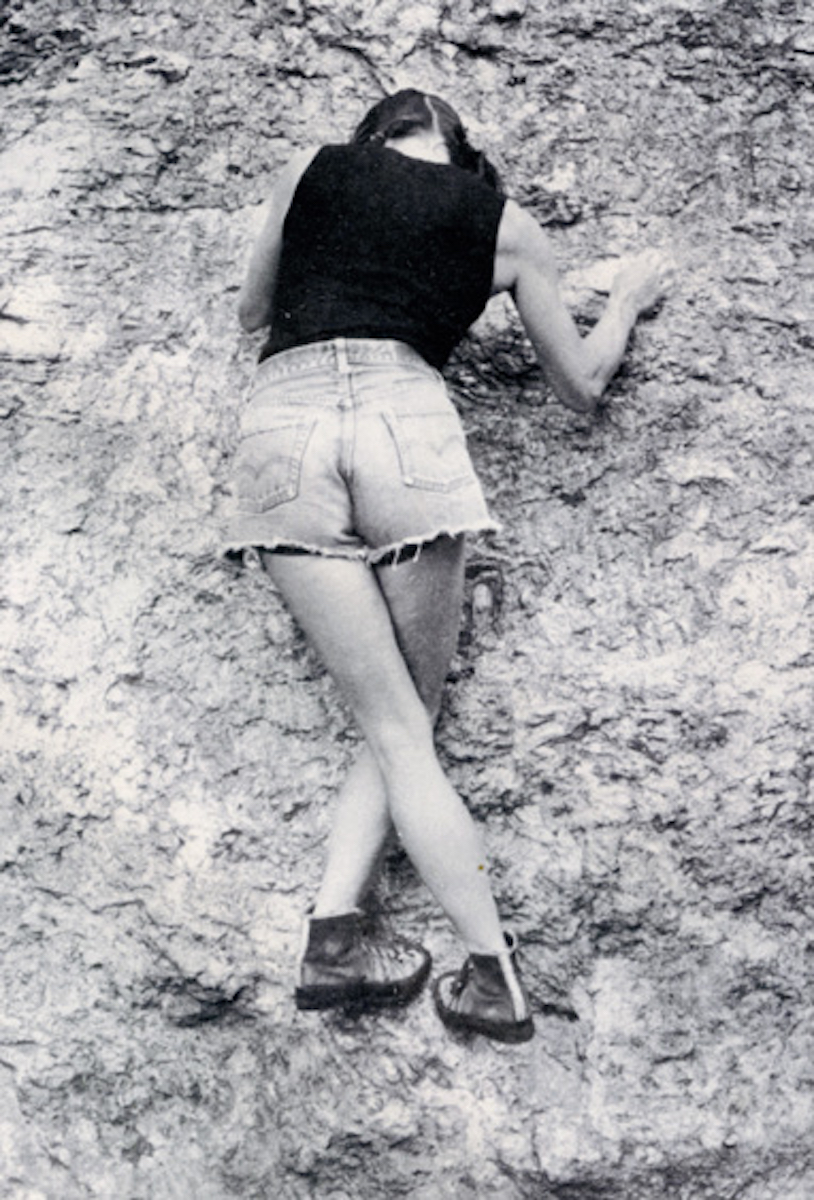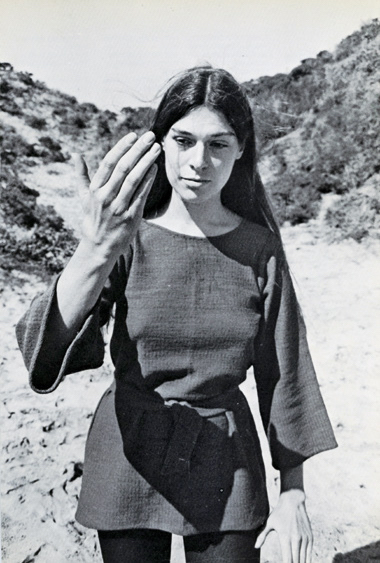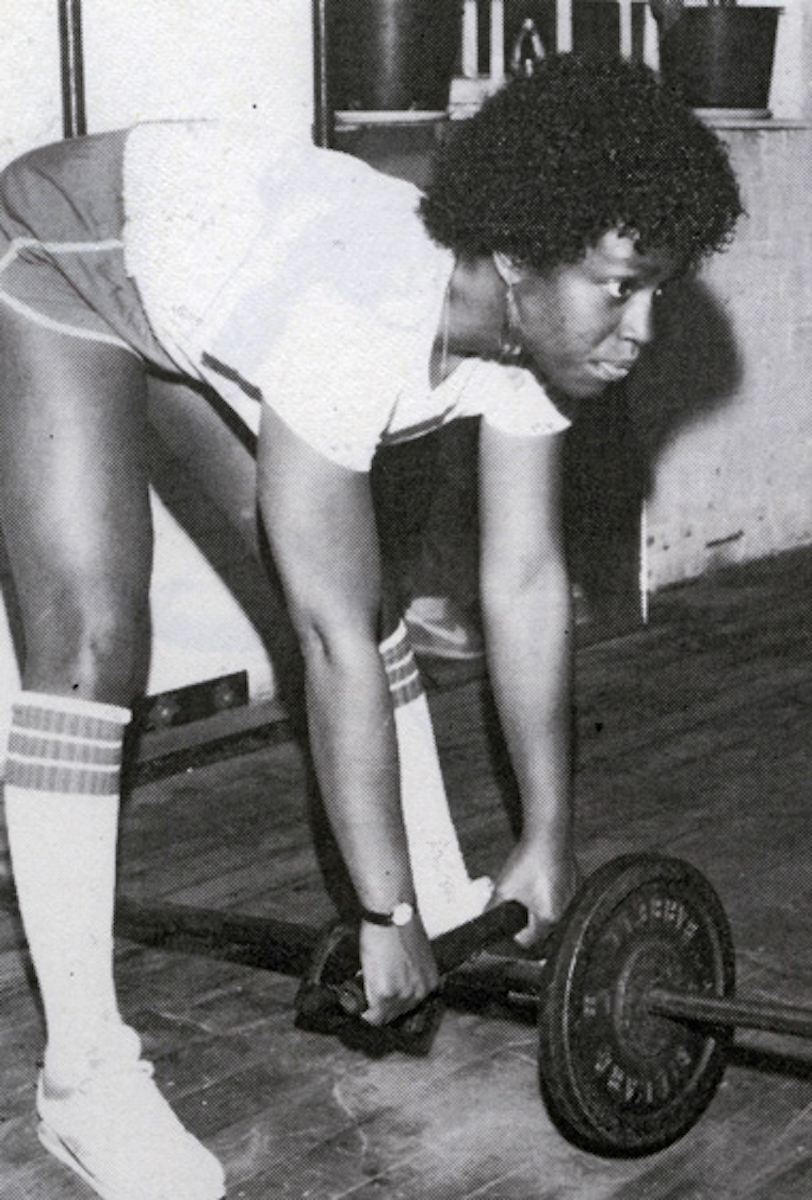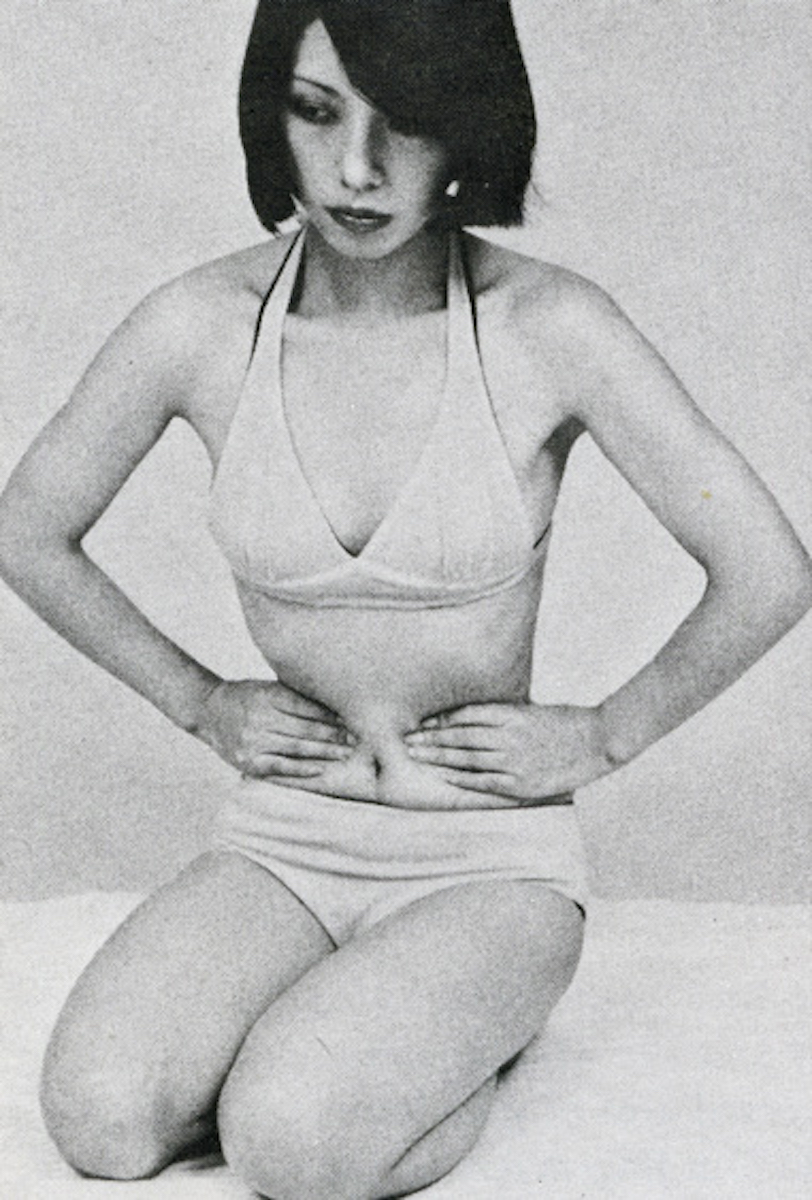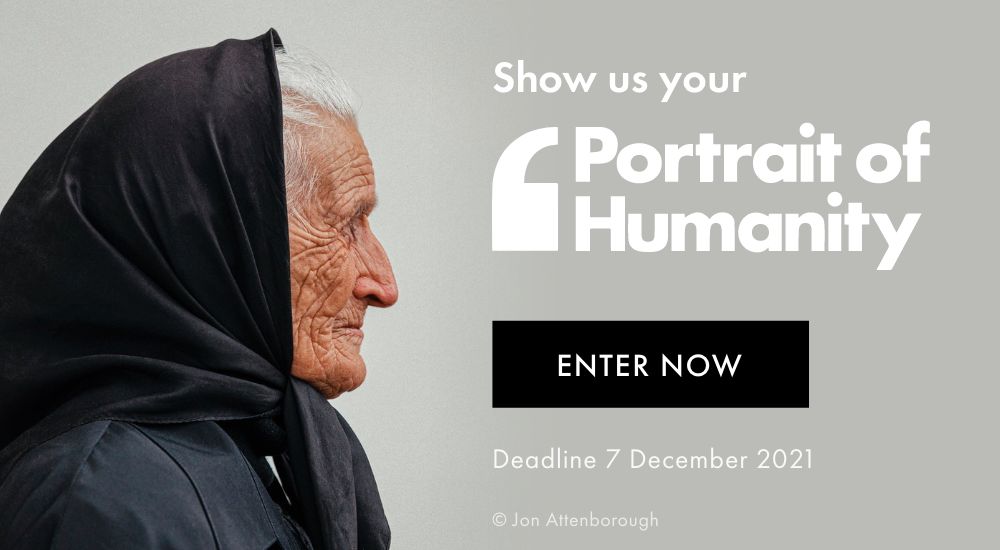Winant’s latest publication contemplates how we understand everything from our body to consciousness through ‘instructional photography’
Ohio-based artist Carmen Winant scours thrift shops, bookstores and garage sales for instructional photographs. In her studio, thousands of images about performing breast examinations, home pap smears, self-defence techniques, triple axels and the Heimlich manoeuvre sit among pamphlets on community organising, bereavement, dog training and feminist healing practices. Winant’s obsession, which has developed over 15 years, is an inquiry into the expansive nature of photography. After all, research for the artist is practice — the rigorous discipline of searching, looking and feeling as fundamental as the final artwork.
Winant’s impulse to collect was born from reading Our Bodies, Ourselves — a landmark book about women’s health and sexuality published in 1970. “I pulled it off my parent’s bookshelf as a teenager,” she explains. “I remember there were pictures of women getting surgical abortions and also images of the tools used. I’m in awe of those pictures and the effect they had on me — I’ve been chasing that feeling ever since.”
In Instructional Photography: Learning How to Live Now, part of a new series of critical essays published by SPBH Editions, Winant explores ‘instructional photographs’ — images that are not vernacular or documentary but instead didactic pictures that serve as guides or tools for learning. Throughout the publication, Winant contemplates how we understand everything from our body to consciousness through this photographic genre. She animates the capacity of such photographs to reflect the world to us. “These images […] have conceptual possibilities (photographs can teach in and of themselves) and political ones (photographs can help us see and help one another as tools of solidarity, information-sharing, resistance and community building).”
Searching for and responding to these images is the lifeblood of Winant’s practice. The artist finds, cuts out and categorises such photographs, taping them to her studio wall. The process allows for unexpected collisions and complex narratives to emerge. The images exist perpetually unresolved and unfixed, and each provides a platform to grapple with issues of identity, power, politics and women’s liberation.
My Birth (2018), for instance, comprises a collage of over 2000 images of women preparing for and experiencing labour and childbirth. The installation, first exhibited in The Museum of Modern Art’s New Photography exhibition, insists the viewer enter the work, an avalanche of images engulfing their vision. Winant’s mission with My Birth is political. The work circulates material created to liberate women from gendered oppression, illuminating the close relationship between information and political power.
In many ways, Instructional Photography encapsulates the essence of Winant’s work. It considers intention, modes of construction and the politics of looking. Through a series of insights, questions and personal anecdotes that vibrate between the academic and the lyrical, the artist invites viewers to speculate and reflect on how society has conditioned us to read images and assign value. She also draws parallels between instructional and art photography. “Don’t artists believe we have something to teach with and through our work?” she says, “even if the strategy is more oblique or metaphorical.” In revealing the capacity of the instructional image “as an index, as a teacher, as narrative, and as a photograph,” she destabilises the inherent hierarchy between genres, unveiling how images can be unbound from ego.
Winant’s book is a moving experience. She takes seemingly ordinary, functional and often transient instructional images and invites us to view them anew. Despite didactic being practically a slur in the art world, Winant reasserts how instructional images embody a complex web of physical, emotional and psychological experiences to transformational effect. “In a moment of heightened anxiety and re-imagination,” Winant says, “ I want to investigate photography’s potential to teach us how to live.”
Instructional Photography is published by SPBH Editions.

